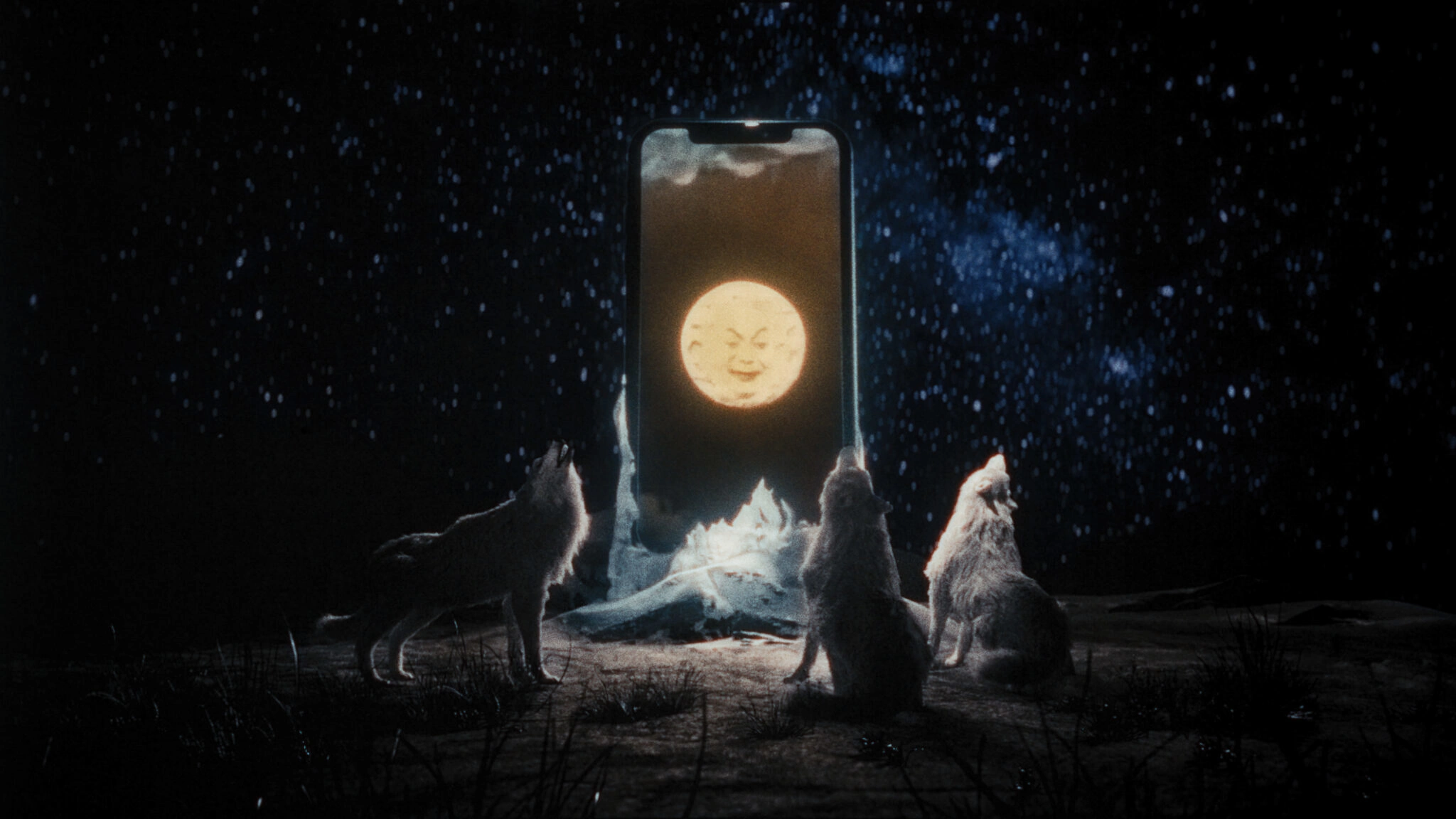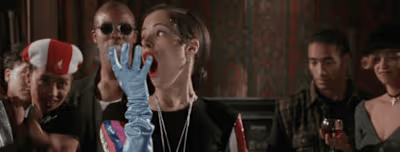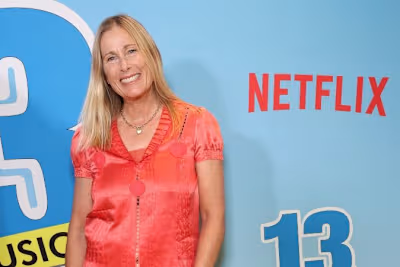Godfrey Reggio Enlists Mike Tyson to Save the World

Godfrey Reggio is a master of silent film. The one-time monk-in-training turned filmmaker is known for his QATSI trilogy, best known for 1982’s Koyaanisqatsi, about civilization’s destructive impact of the world. His first film in a decade is the new Once Within A Time, a wordless apocalyptic comedy that follows a new generation, led by climate activist Greta Thunberg, who must decide if the world is coming to an end or being reborn.
The New Orleans-born filmmaker, 83, spent his youth in the Catholic Christian Brotherhood, where he took a vow to “to teach the poor gratuitously beyond poverty, chastity and obedience,” he says. Reggio was kicked out of the Brotherhood for spending too much of his time working with street gangs in the 1960s. He’s kept his vow to teach the poor (in spirit) through cinema.
Once Within A Time is scored by Reggio’s longtime collaborator Philip Glass, co-directed by Jon Kane, and includes Steven Soderbergh as one of his executive producers.
MovieMaker spoke with Reggio about designing Once Within A Time for our reptilian brains, Thunberg and Mike Tyson’s contributions to the movie, and how the project is inspired from everyone ranging from Homer the Greek poet and Homer Simpson. Once Within A Time arrives on Friday, October 20 at Brain Dead Studios in Los Angeles.
Joshua Encinias: Did you model the look of Once Within A Time after Georges Méliès’ filmmaking techniques?
Godfrey Reggio: It was only a reference. What we did was use digital, not AI, but human intelligence to create the look of cinema done in 1920 to talk about 2022 in Once Within A Time. So it’s like a prophecy about 2022.
We use his shot of the moon, but we put it on a gizmo instead. We have reference to that and the Tower of Babel and the Garden of Eden and the Yellow Brick Road and all of those things that are orthodox in filmmaking, so we made them heterodox — turned everything on its head.
JE: You frame the movie with a Garden of Eden-like story, with your own Adam and Eve, an apple, and a demon. These references originate from Middle East, but they’re also primary texts and stories of the West. It seems like you made the movie for a Western audience.
GR: We made it for everybody, because whether you’re Atheist, Jewish, Christian, Muslim, the books of the Bible influence us. They’re stories that we live by. So its truth becomes our truth. Faiths unquestioned may become prisons. So we question those. We know Adam ate the apple. We even have it in our vernacular. I can see you have one: an Adam’s apple.

A reference to Georges Méliès 1902 film “A Trip to the Moon” in Once Within a Time.
JE: Are you concerned younger audiences may not understand the references?
GR: Kids today will see and hear more in one day than a kid in the Middle Ages will have seen and heard in their whole life. They know what’s going on. So we made a film with children, for children of all ages. Baudelaire says, “Genius is childhood recovered.” So this is all about play.
If you want to deal with tragedy, you have to do so through humor, which is the hardest form of art. And it was the art of the original cinema. There are only seven stories, really. Seven virtues, seven stories. It’s not about the story, it’s the storyteller.
JE: Do you think people seeing images on our devices all day long makes it difficult for new films to affect people?
GR: Yes, I think so. The images that I think are most effective are those that are right in front of us. Again, it’s the storyteller, not the story. That which is most present is least seen. So to re-see that is what art is about.
Our solution is to aim the movie at your oldest brain, your reptilian brain, your stem. It controls the right and left hemisphere. Once Within A Time is unrelentingly aimed at your right hemisphere, the hemisphere that doesn’t allow you to forget, so that it can question the left hemisphere of reason and logic.
Godfrey Reggio on Greta Thunberg: ‘The Joan of Arc of Today’
JE: Greta Thunberg is one of thew few characters in your movie that audiences would know by name. Why is a version of her in the movie?
GR: She’s like the Joan of Arc of today. The film that we made is about everything that’s happening as we speak. We’re on the verge, if not already, in a third World War, they’re bombing the s— out of Palestine right now, and they have bombed Israel. It’s all about vengeance. War is the final discussion. The United States has been at war for 90% of its history. And the history of civilization is one of the two twins, religion and war.
JE: If Greta Thunberg is the Joan of Arc of our time, who is Mike Tyson to our time, and why is he in the movie?
GR: First of all, there are more people wanting to meet Mike Tyson like popes, dictators, everybody, but he’s not acknowledged for reasons that are well-known. So for me, he’s a hero. Mike Tyson is perspicacious. He’s always clear and he smokes marijuana nonstop and eats mushrooms by the pound. He’s my kind of guy.
When I said I wanted Mike in the movie, everybody thought I had smoked too much; which I do, or drank too much; which I do. But I got him, and he came, and he did his deed. It was a real great event. He plays the mentor for the kids in the movie. And on the streets, Mike Tyson is more famous than Jesus Christ.
The trailer for Once Within a Time.
JE: Did your decade plus in the monastery as a young man inspire your dialogue-free filmmaking style?
GR: Partly. I stuttered badly as a child, and my father taught me how to make an asset out of a liability. When I was with the Brothers starting at 14, they taught me how to live by the bell, to live in the world but not of it. To live for others, which is what art’s about. It’s about otherness.
It’s about giving. Any art is about giving. I learned that as a young person and what you learn as a young person stays with you throughout your life.
JE: Does anything about the religious life still appeal to you? Are you Catholic?
GR: Well, I’m not a Catholic, but a Catholic is me. I’m not a Brother, a Brother is me. They threw me out, but I keep my vows to teach the poor gratuitously beyond poverty, chastity and obedience. I’m childless but have a bazillion kids because I’m childless. I’m able to live that kind of intensity because I’m only 1,000 months old. That’s nothing in the stretch of a lifetime. I’ve lived many lives, died many deaths.
JE: After the credits, you quote another Homer: Homer Simpson, who’s praying to Superman.
GR: Oh yeah, that was inspired by George Meyer, the greatest comedian in America. For 25 years he was head of the comedic group that did the The Simpsons. He’s retired now. He’s a good buddy of mine.
Homer’s one of my muses. Homer Simpson has humor. So it gets a laugh at the end because it’s humorous. Baudelaire says the smile of the Mona Lisa is the stigmata of original sin. He’s saying humor is who we are. We deal best with tragedy through humor, it opens the heart. Makes you laugh. That’s who we are. We can laugh at ourselves and the stupidity of that which is around us.
Main image: A still from Once Within a Time, by Godfrey Reggio.
Editor’s Note: Corrects byline.
Share:
Like this project
Posted Oct 25, 2023
Godfrey Reggio calls on Greta Thunberg and Mike Tyson to save the world in Once Upon a Time, the latest film by the Koyaanisqatsi director.
Likes
0
Views
30





